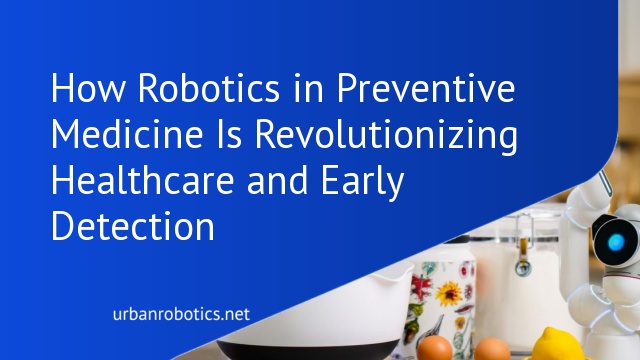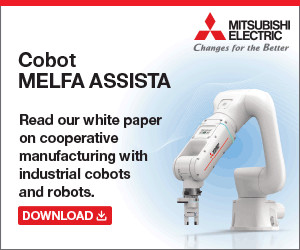Overview of Robotics in Preventive Medicine
Robotics is transforming preventive medicine through advanced technology and innovative applications. Robotics aids in early disease detection by using AI-driven diagnostic tools. These tools analyze vast amounts of data to identify potential health issues before symptoms appear. For instance, robotic imaging systems can detect tumors in their earliest stages, improving treatment outcomes.
Personalized health monitoring has also seen significant advancements with robotics. Wearable devices equipped with sensors track vital signs, such as heart rate and blood pressure, in real-time. These devices provide continuous health data, allowing for timely interventions and reducing the risk of severe conditions.
Robotic systems are enhancing proactive healthcare by automating routine tasks. Automated medication dispensers ensure patients adhere to their prescribed regimens, reducing human error. In addition, telepresence robots facilitate remote consultations, making healthcare more accessible and efficient.
The integration of robotics in preventive medicine is leading to more predictive, efficient healthcare, ultimately benefiting individuals through improved health outcomes. This ongoing evolution underscores the importance of continued investment and innovation in this field.
Key Developments and Innovations
Robotics in preventive medicine has led to several groundbreaking advancements, enhancing the efficiency and effectiveness of healthcare.
Early Detection and Diagnosis
Robotics plays a crucial role in early disease detection and diagnosis. AI-driven robotic systems analyze medical images to identify anomalies like tumors at their earliest stages. For instance, breast cancer detection has improved due to automated imaging technologies, reducing false negatives. Additionally, these systems offer predictive insights based on patient data, enabling personalized treatment plans. According to a study published in the Journal of the National Cancer Institute, AI-technology has improved early detection rates by up to 30%.
Robotic-Assisted Screenings
Robotic-assisted screenings streamline and improve the accuracy of health screenings. These systems automate routine screenings such as colonoscopies, reducing human error. In colonoscopies, robotic arms with attached cameras navigate the colon more precisely, detecting polyps often missed by traditional methods. Furthermore, robots enable remote screenings, making healthcare more accessible to patients in underserved areas. According to research in Gastrointestinal Endoscopy, robotic-assisted colonoscopies have increased polyp detection rates by 10-20%.
Benefits of Robotics in Preventive Medicine
Robotics is revolutionizing preventive medicine with significant benefits. These technologies offer increased accuracy, enhanced efficiency, and personalized healthcare.
Increased Accuracy
Robotic systems enhance diagnostic precision. For example, AI-powered robots detect tumors in early stages with higher accuracy than traditional methods, reducing false positives and negatives (PubMed, 2020). Wearable robotic devices continuously monitor vitals, alerting to anomalies in real-time, which enables timely interventions. Automated image analysis by robots improves the identification of medical conditions, ensuring patients receive accurate diagnoses promptly.
Enhanced Efficiency
Robotics streamlines various healthcare processes. Automated systems dispense medications, reducing human error and ensuring dosage accuracy. Robotic-assisted screenings, such as colonoscopies, make procedures quicker and more precise, enabling healthcare providers to serve more patients efficiently. Remote robotic consultations cut down travel time for patients and practitioners, making healthcare more accessible and reducing clinic congestion.
Challenges and Limitations
Navigating robotics in preventive medicine presents several challenges requiring careful consideration. Despite significant advancements, various barriers must be addressed.
Technological Limitations
Robotic systems, though advanced, face issues like high costs and complex integration. Many healthcare facilities struggle to afford these technologies, leading to unequal access. Additionally, robotic devices require consistent updates and maintenance, which are resource-intensive. Some systems might also lack the advanced AI needed for accurate diagnostics, limiting their effectiveness. Connectivity issues, especially in remote areas, further hinder the utilization of robotics in preventive care.
Ethical Considerations
Deploying robotics in healthcare raises important ethical questions. Data privacy concerns arise as robotic systems often handle sensitive patient information. Ensuring this data is securely managed is paramount. There’s also the potential for job displacement among healthcare workers, raising concerns about the future workforce. Informed consent is critical, as patients might be wary of robotic interventions without clear understanding of the technology. Establishing clear guidelines and ethical frameworks helps address these concerns effectively.
Future Prospects
Exploring the future of robotics in preventive medicine reveals promising advancements.
Emerging Technologies
Nanorobots, capable of navigating the human body, can deliver drugs to specific cells. These robots enable targeted therapies, minimizing side effects. Another area of growth involves soft robotics for flexible, safe interactions inside the body. Advances in AI algorithms allow real-time analysis of patient data, enhancing diagnostics and treatment plans. Developments in wearable devices that can sense biochemical changes will broaden early detection capabilities, offering timely preventive measures.
Potential Impact on Healthcare Systems
Robotics in preventive medicine can reduce healthcare costs by enabling early diagnosis and less invasive treatments. Streamlining procedures and minimizing human error lead to more efficient workflows, improving patient outcomes. These technologies can address workforce shortages by automating routine tasks. Increased data collection from robotic systems contributes to better research, shaping future healthcare policies. Tailored interventions and continuous monitoring will likely decrease hospital admissions, lessening the burden on healthcare facilities.
Conclusion
Robotics in preventive medicine is revolutionizing how we approach healthcare. By leveraging AI and advanced technologies, we’re seeing unprecedented improvements in accuracy, efficiency, and personalized care. Wearable devices and remote consultations are making healthcare more accessible than ever.
Despite challenges like high costs and ethical concerns, the future looks bright. Innovations such as nanorobots and soft robotics promise to further enhance patient outcomes. As these technologies continue to evolve, we can expect a significant reduction in healthcare costs and errors.
Ultimately, the integration of robotics in preventive medicine will lead to more tailored interventions and continuous monitoring. This progress will not only decrease hospital admissions but also pave the way for better research and healthcare policies.





